The Modern Atlas Shrugged: The Signs of Decline
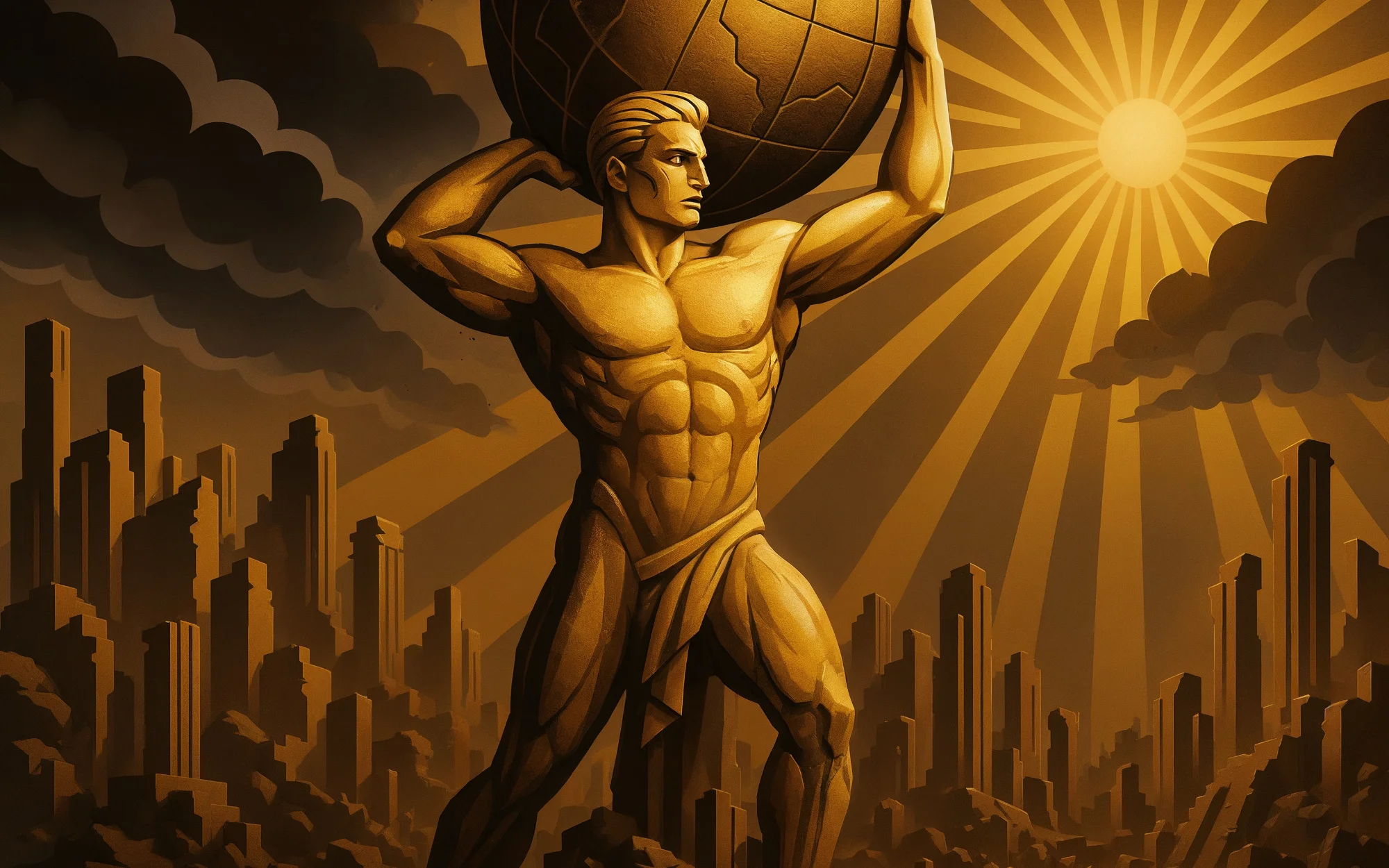
The Western world, particularly Europe, is facing a decline and a concerning shift towards bureaucracy, authoritarianism, collectivism, and socialism. Many people sense that something is wrong, but few understand the underlying causes. This feeling of uncertainty and insecurity leads them to demand increased government control, a larger welfare state, and more laws and regulations, which are counterproductive and will ultimately worsen the situation. Many refuse to acknowledge this reality because they were born during a post-war period of economic growth and continue to consume mainstream propaganda that misleads them into believing that “everything is fine.”
You did not care to compete in terms of intelligence—you are now competing in terms of brutality.
You did not care to allow rewards to be won by successful production—you are now running a race in
which rewards are won by successful plunder. You called it selfish and cruel that men should trade
value for value—you have now established an unselfish society where they trade extortion for
extortion. Your system is a legal civil war, where men gang up on one another and struggle for
possession of the law, which they use as a club over rivals, till another gang wrests it from
their clutch and clubs them with it in their turn, all of them clamoring protestations of service
to an unnamed public’s unspecified good. You had said that you saw no difference between economic
and political power, between the power of money and the power of guns—no difference between reward
and punishment, no difference between purchase and plunder, no difference between pleasure and
fear, no difference between life and death. You are learning the difference now.
Everyone who has read Ayn Rand’s novel “Atlas Shrugged” and doesn’t consume state propaganda news notices the striking parallels to her 1957 work, as highlighted by Elon Musk in this interview.
I first read Ayn Rand’s fiction in March 2023. Since then, I have read numerous economic books, explored libertarian literature, and studied the Austrian School of Economics. I read as many works by Ludwig von Mises, Murray Rothbard, Friedrich Hayek, and Hans-Hermann Hoppe as possible.

My favorite chapter from the book is Part 3, Chapter VII, “This is John Galt Speaking.” In this chapter, the ominous John Galt takes control of all broadcasting in the country and presents a four-hour argument that human reason and individual self-interest form the foundations of a moral and productive society. He rejects altruism and collectivism as destructive forces that enslave the capable to the incompetent. Galt asserts that the mind is the source of all value and calls on the “men of the mind”—the innovators and producers—to withdraw from a world that punishes their virtues, leading to its inevitable collapse. This chapter defends capitalism, personal freedom, and the pursuit of happiness through rational self-reliance.
The world of Atlas Shrugged portrays a landscape of industrial decline, with factories closing across the country and essential products becoming scarce. The government nationalizes the private sector, implementing price controls and economic regulations. A crucial rail bridge, the Taggart Bridge, collapses due to substandard materials. Train schedules become unreliable, resulting in frequent derailments and accidents caused by poor maintenance and incompetent employees. One significant incident is the Taggart Tunnel disaster, which leads to the deaths of many passengers from coal smoke. New York City goes dark when the power grid fails.
Many productive individuals mysteriously disappear. Incompetence is rising, and many positions are filled based on connections rather than merit. Sacrifice and need are valued more than achievement and productivity, while political interests influence scientific research.
The socialist government is developing a secret weapon system called “Project X” and has initiated Directive 10-289, which freezes employment, production, and wages. The government justifies its increased control by citing the crisis, while successful individuals are blamed for societal problems.
People use the phrase “Who is John Galt?” to express their frustration and anger at government policies. If you recognize these signs, congratulations! You are not alone. If you don’t, allow me to share my thoughts.
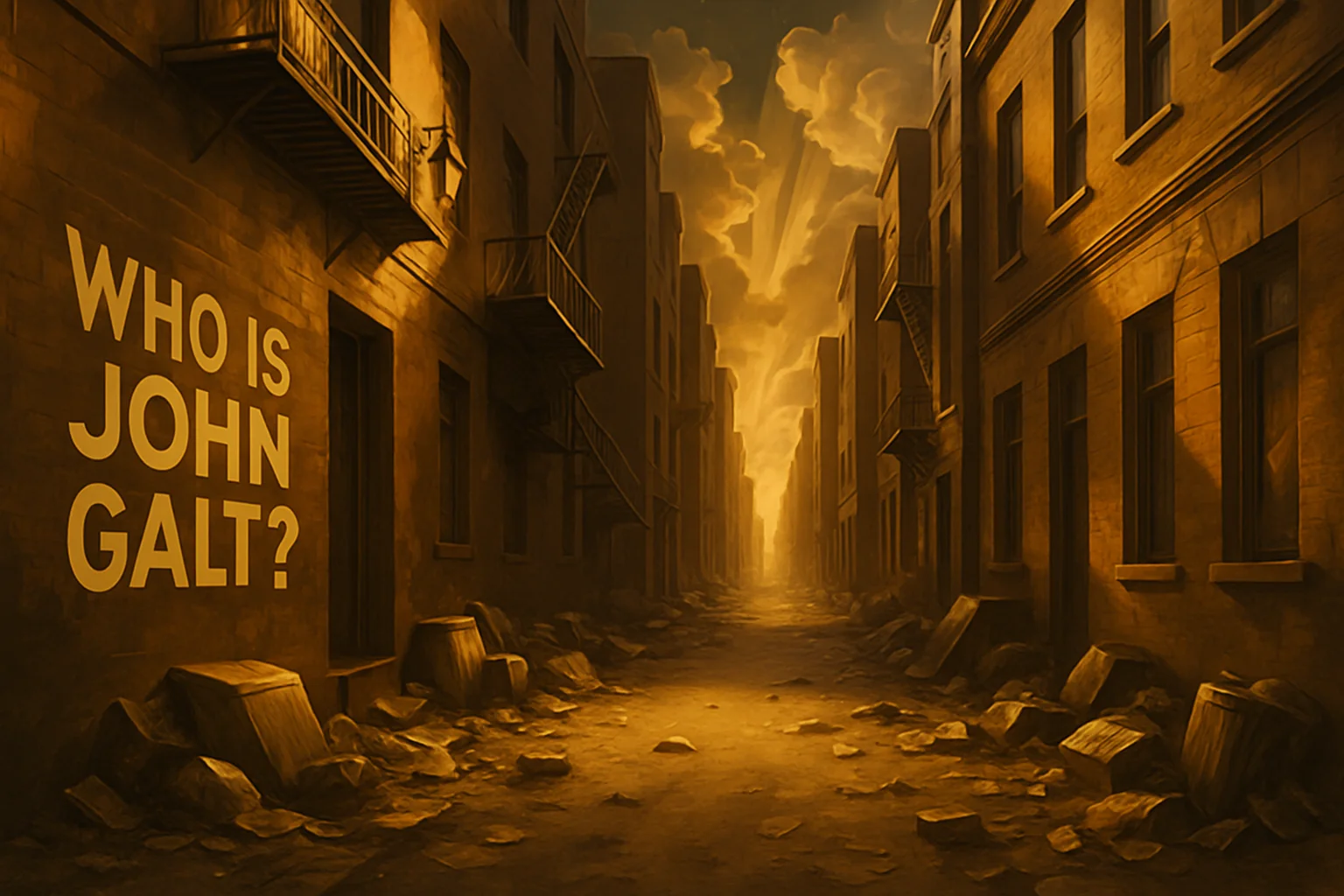
Industrial and Economic Decline
Industrial Giants in Crisis
Sixteen years ago, the economies of the European Union and the United States stood shoulder to shoulder, each a titan of global prosperity. Today, the US boasts a GDP of €25,5 trillion—50% larger than the EU’s €16,6 trillion. At the heart of Europe’s faltering fortunes lies Germany, once an industrial juggernaut, now a shadow of its former self. The International Monetary Fund ranks it last among the world’s top 30 economies, and it ended 2023 with a negative growth rate of 0.3% GDP. Germany has fallen from 6th in global competitiveness in 2014 to 24th in 2024. This decline is not only a national crisis—it’s a warning for Europe and the West. What went wrong? A toxic mix of energy missteps, industrial neglect, and excessive state control has dragged Germany into an economic mire, with ripple effects threatening the broader Western world.
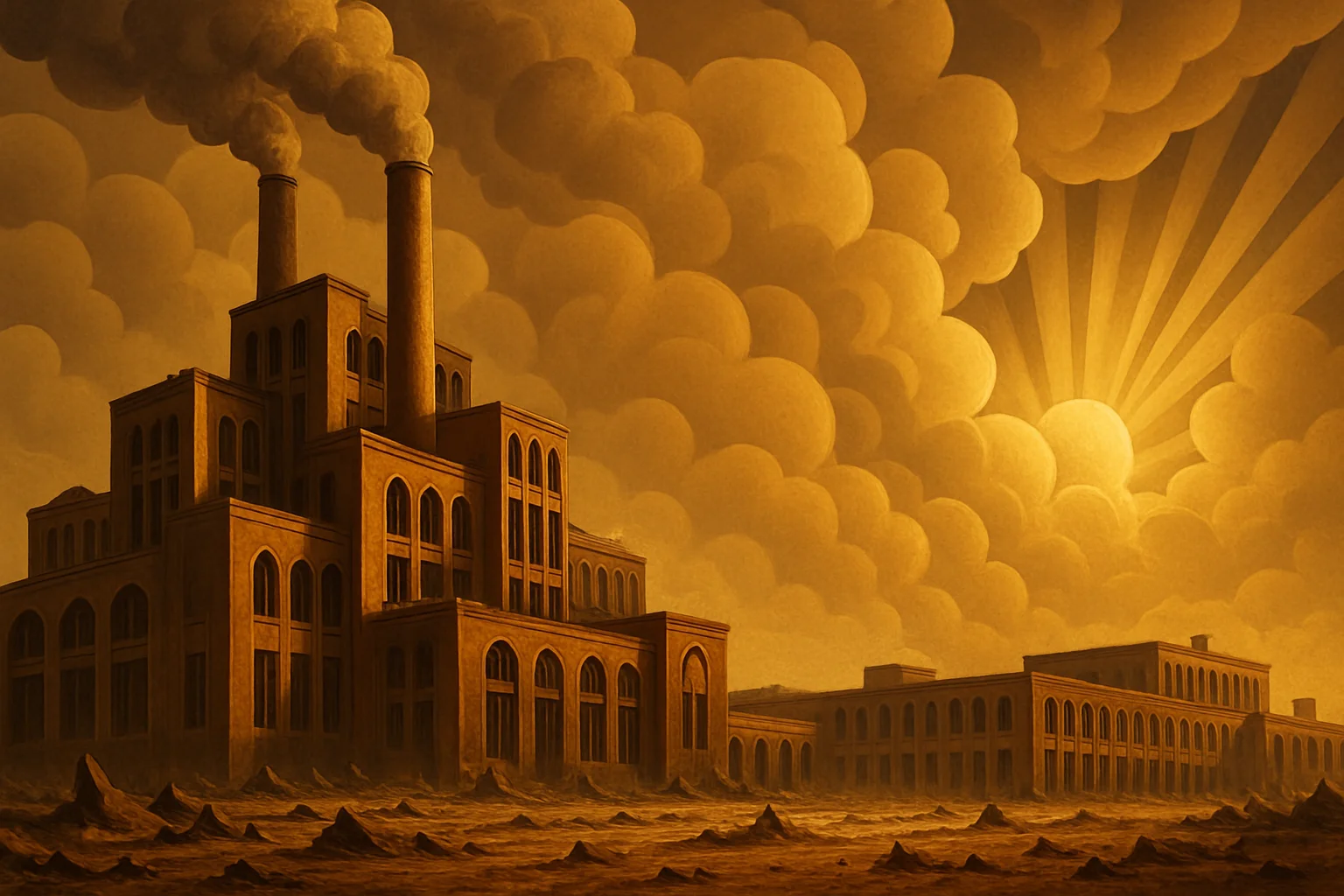
The statistics present a troubling scenario. Germany’s GDP decreased by 0.2% in 2024, and productivity growth has stalled. The IMF reduced its 2025 forecast by 0.5 points to just 0.3%, while the country’s long-term potential growth has halved from 1.4% to 0.7% over five years. In contrast, the US has seen its potential growth rise to 2.8%. Globally, Germany’s share of GDP has fallen from 5% to 4% over the past decade, while the US’s share increased from 22% to 26%. Domestically, the DAX index of export giants surged by 18.56% in 2024, masking the MDAX’s decline of 5.35%. Wealth per person has dropped to €68,000, leaving Germans poorer than Slovenians and ranking 30th worldwide. These figures are not only statistics; they signal distress from a nation losing its economic stability.
Germany’s industrial strength is unraveling. The automotive sector, once a global leader, is stumbling—Volkswagen’s stock has dropped from €250 in 2021 to €86 in 2024. The steel, chemicals, and shipbuilding industries are also struggling as production declines. Family businesses, the backbone of the economy, are suffering: 20% plan job cuts in 2025, while only 16% intend to hire—the lowest rate since 2015. Investment is hesitant due to uncertainty and bureaucracy, with 62% of firms citing overregulation as a barrier. Job statistics reveal the situation: the car industry has shrunk to 97.5% of its 2021 workforce by 2024, while public administration has grown to 106%. Meanwhile, German companies are looking to Poland for lower costs, and tech firms are moving to the US. The industry isn’t just declining—it’s defecting.
The economic decline seeps into society. The middle class shrinks, social mobility stagnates, and the lower classes sink deeper into poverty. Real estate is unstable as aging Boomers, who own most of it, will pass away—prices could implode within a decade. Trust erodes: satisfaction with the federal government plummeted from 60% in 2022 to 12% in 2024. A “dictatorship of opinion” silences dissent, and media illusions replace reality, driving people into escapism. Talent flees—90% of EU tech workers would move to the US for better pay (50% higher) and funding (five times more). In Berlin, startups face suspicion; founders are labeled “capitalist parasites.” Germany isn’t just losing wealth—it’s losing hope.
Germany’s troubles resonate across Europe. The EU has no trillion-dollar companies, while the US has nine. Europe’s top 100 firms have dwindled from 46 in 2007 to 18 today, while China maintains nine. French President Emmanuel Macron warns, “The EU could die… we are over-regulating and under-investing.” Tesla’s Giga Berlin faced protests over “techno-colonialism,” a symptom of Europe’s anti-innovation mindset. Berlin’s startup scene avoids risk, while Silicon Valley embraces it. The result? A brain drain to the US and Southeast Asia, where opportunity outweighs red tape. Europe clings to its past—a “museum,” as one observer put it—while the future slips away.
When Bridges Fall: The Cost of Neglect
One sign of decline is the collapse of infrastructure. In Germany, public infrastructure investment is critically low, ranking near the bottom in the EU. This situation is exacerbated by planning delays and a shortage of skilled labor. Despite the potential for course correction, experts suggest it may already be too late, raising concerns about Germany’s ability to catch up with other EU countries in infrastructure development.

A prime example of this is the Carolabrücke in Dresden, which partially collapsed on September 11th, 2024, narrowly avoiding casualties during peak traffic hours. The left-wing city council majority rejected a crucial structural integrity review requested by the Free Voters, prioritizing political affiliations over public safety. More than half a year later, the debris remains uncleared, and the construction of a new bridge is not to be expected before 2035.
Germany is facing a significant investment backlog. Schools require €55 billion, and roads need €48 billion, bringing the total to €186 billion, which represents a 12.4% increase from the previous year. This situation raises questions about how such a large investment gap exists despite high tax revenues, suggesting inefficiencies or misallocation in government spending. Similar to the U.S., a key reason for this is the lack of political will to prioritize infrastructure investment over other concerns. Germany invests in bicycle paths in Peru but lacks the political will to improve its infrastructure.
Ironically, Germany is lagging behind Brazil and Peru in terms of average internet connection speeds. The LTE and 5G infrastructure is so underdeveloped that I have no internet connection in parts of the train route between Hamburg and my birthplace, Wolfsburg.
Delays, Disruptions, and Decline
While trains in China reach speeds of up to 800 km/h, in Germany, you are fortunate if they arrive at all. Deutsche Bahn exemplifies the inefficiencies and decline of the German railway system. Although it operates as a stock company, the state owns 100% of Deutsche Bahn AG, making it state-owned. In 2024, only 62.5% of long-distance trains arrived within six minutes of their scheduled time. Cancellations and disruptions are common, often due to ongoing construction and an aging infrastructure that requires extensive repairs. The company has launched a new initiative to improve punctuality and reliability, with plans to reduce delays by 2027 and achieve a punctuality rate of 75-80%.
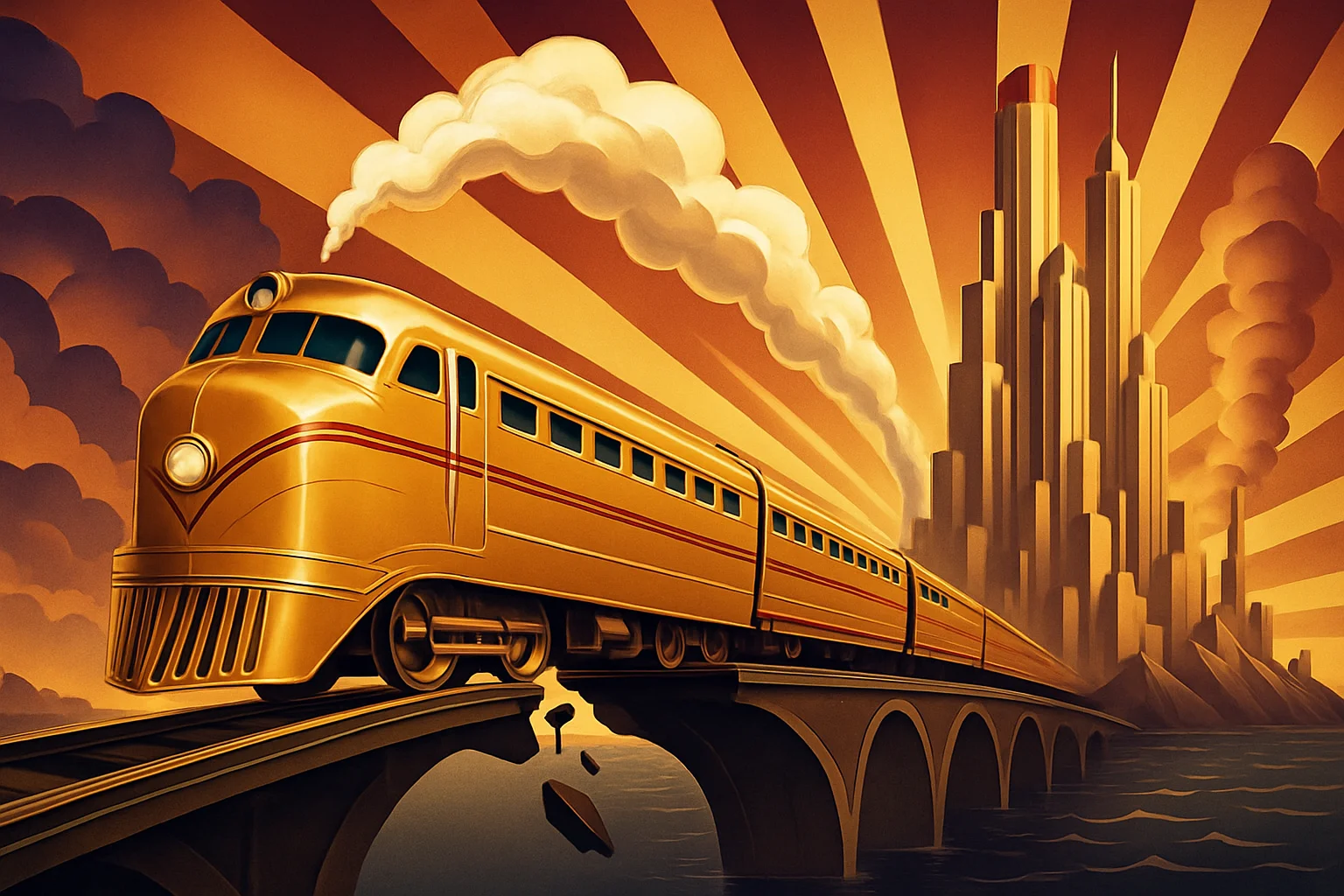
Cancellations are so frequent and problematic that anyone who has taken a train can share horror stories about their experiences. I have several stories, including instances where I was late by three hours or more due to snow, fallen trees, or suicides. I injured my leg when someone pushed me while I tried to board a replacement bus that arrived two hours after the trains stopped, as 500 people attempted to enter a bus with room for only 120.
The train service has deteriorated to the point that some neighboring countries have halted connections from Germany. This includes not just individual trains but increasingly entire routes. Since April 29, 2025, the EC7 and EC9 connections from Germany have been terminated at Basel Central Station in Switzerland due to significant delays on German trains. In contrast, 93% of all trains in Switzerland arrive on time. The termination of these connections will remain in effect at least until December.
Infrastructure decline is a critical issue. Decades of underinvestment have led to an aging network. The Rail Network Condition report for 2022, published by DB InfraGO, highlighted a year-on-year deterioration, with replacement costs rising by 75% due to inflation and global economic pressures. This decline is evident in outdated signaling systems and track conditions, which contribute to delays and operational inefficiencies. The network, spanning approximately 39,200 km, is operating at full capacity and cannot accommodate additional trains without significant upgrades.
Postage Up, Service Down
Another company declining is the Deutsche Post AG or DHL Group. Although privatized in the 1990s, the state still holds nearly 17% through the KfW Bank. The company has been struggling with labor shortages, particularly in logistics and transportation. The shortage of truck drivers has led to delays in deliveries and increased costs for businesses. The company has also faced criticism for its treatment of workers, including low wages and poor working conditions, which have led to strikes and protests.

More people than ever formally complained about the postal service last year. Over 44,000 complaints about the former state-owned company reached the Federal Network Agency in 2024, marking a 7% increase from the previous year and setting a record.
Compared to 2021, the number of complaints has nearly tripled. While criticism affects the entire postal and parcel industry, 89% of all complaints are directed at market leader DHL and its mail division, Deutsche Post. Customers are not only voicing concerns about delivery issues but also about branches that closed during their stated opening hours. The company typically attributes these problems to staff shortages.
However, the postal service is contributing to these issues itself. By the end of the year, the company plans to cut 8,000 jobs nationwide, which is over 4% of the 187,000 jobs in the German mail and parcel sector. Additionally, the post office significantly increased postage rates at the beginning of this year.
Educational Decline
The Competency Crisis: When Germany’s Talent Pipeline Runs Dry
In 2015, Germany’s education system faced a sobering reality check when the PISA results revealed a sharp decline in students’ reading, math, and science competencies. A decade later, this downward trend continues, with reading scores plummeting since Angela Merkel’s 2015 open-door refugee policy. This is not just a statistical anomaly; it reflects a broader competency crisis that threatens Germany’s future. The nation is grappling with a combination of demographic, educational, and societal shifts that require urgent attention. What is driving this decline, and how did a country once renowned for its precision and intellect reach this point?

Germany’s competency crisis starts with its demographics. For over 50 years, fertility rates have remained between 1.2 and 1.5 children per woman, well below the replacement level of 2.1. This has created an age pyramid with a large cohort of baby boomers, born in the 1960s, who are now nearing retirement. These workers, who form the backbone of Germany’s skilled trades and industries, will soon leave the labor market, taking decades of expertise with them. The result is a shrinking working-age population and a growing knowledge gap that younger generations are ill-prepared to fill.
Compounding this demographic challenge is a significant shift in education. While 90% of baby boomers trained in trade schools to become electricians, nurses, or police officers, today, 60% of high school graduates pursue college degrees, often in fields like business or social sciences. This educational expansion has lowered entry standards to accommodate average or below-average students, leaving vocational trades to recruit from the bottom third of the cognitive pool. Once drawing from a broad talent base, trades now struggle with less-qualified trainees, which erodes the quality of essential services. Germany’s economic engine, long fueled by skilled labor, is sputtering as a result.
Integration or Erosion?
Migration adds another layer of complexity. Over 40% of children in Germany now come from migrant families—a diverse group, many of whom are well-integrated, but there has been a disproportionate rise in low-educated segments. This is the only growing demographic in an otherwise aging nation, which poses challenges to an education system struggling to adapt. The influx following Merkel’s 2015 policy has strained resources, contributing to the decline in PISA scores. Without targeted support, this growing population risks being left behind, amplifying the competency gap.
The stakes are high as youth from migrant backgrounds approach 50% of Germany’s young population. Their educational outcomes will shape the nation’s future, yet integration efforts are faltering. PISA 2022 data reveals a significant gap in math scores between immigrant and native students. Language barriers, underfunded schools, and cultural differences hinder progress, leaving many migrant youths unprepared for higher education or skilled trades. This failure limits individual potential and jeopardizes Germany’s ability to maintain a competent workforce.
The crisis is already evident. In classrooms, 25% of children leave primary school unable to read or write properly, according to an IGLU study. PISA confirms a decade-long decline in core subjects, yet standards continue to drop—30% of students now receive top grades despite weaker performance. Competition, once a driver of excellence, is now avoided. Beyond schools, this decline extends to the roads: 50% of candidates fail the theoretical driving test, a record low that psychologist Florian Becker attributes to “low IQ, Verdummung (dumbing down), and fehlende Selbstdisziplin (lack of self-discipline),” as reported by Focus.de.1 Overprotective parenting and lowered expectations have left youth unprepared for practical responsibilities, signaling a broader erosion of capability.
Too often, fingers point outward—to schools, teachers, or abstract “systems”—while ignoring internal factors like motivation and discipline. Shielding children from failure risks stunting their development. Meanwhile, the societal taboo against acknowledging cognitive differences or rewarding excellence stifles honest debate. Germany’s future depends on capable individuals, yet the current trajectory prioritizes comfort over competence.
Energy Crisis
Green Dreams, Harsh Realities
One of the main drivers of the economic decline is Germany’s ideologically driven Energiewende policy, which aims to achieve climate neutrality by 2045. This policy seeks to transition the nation from fossil fuels and nuclear power to renewable energy sources like wind and solar. Since 1971, the energy mix has evolved significantly, with low-carbon alternatives—such as wind, solar, biofuels, and hydropower—gaining traction. However, a crucial decision made under Angela Merkel and finalized under Olaf Scholz phased out nuclear power entirely, reducing capacity from 23 GW to 0 GW by 2023. This move, influenced by public fears following Fukushima and pressure from the Green Party, aimed to satisfy environmentalists but left Germany vulnerable. Over the past 25 years, the nation has invested more than €500 billion in renewables, constructing 30,000 wind turbines and over 3 million solar panels—many sourced from China. Yet, the promise of a stable, green energy future remains unfulfilled.
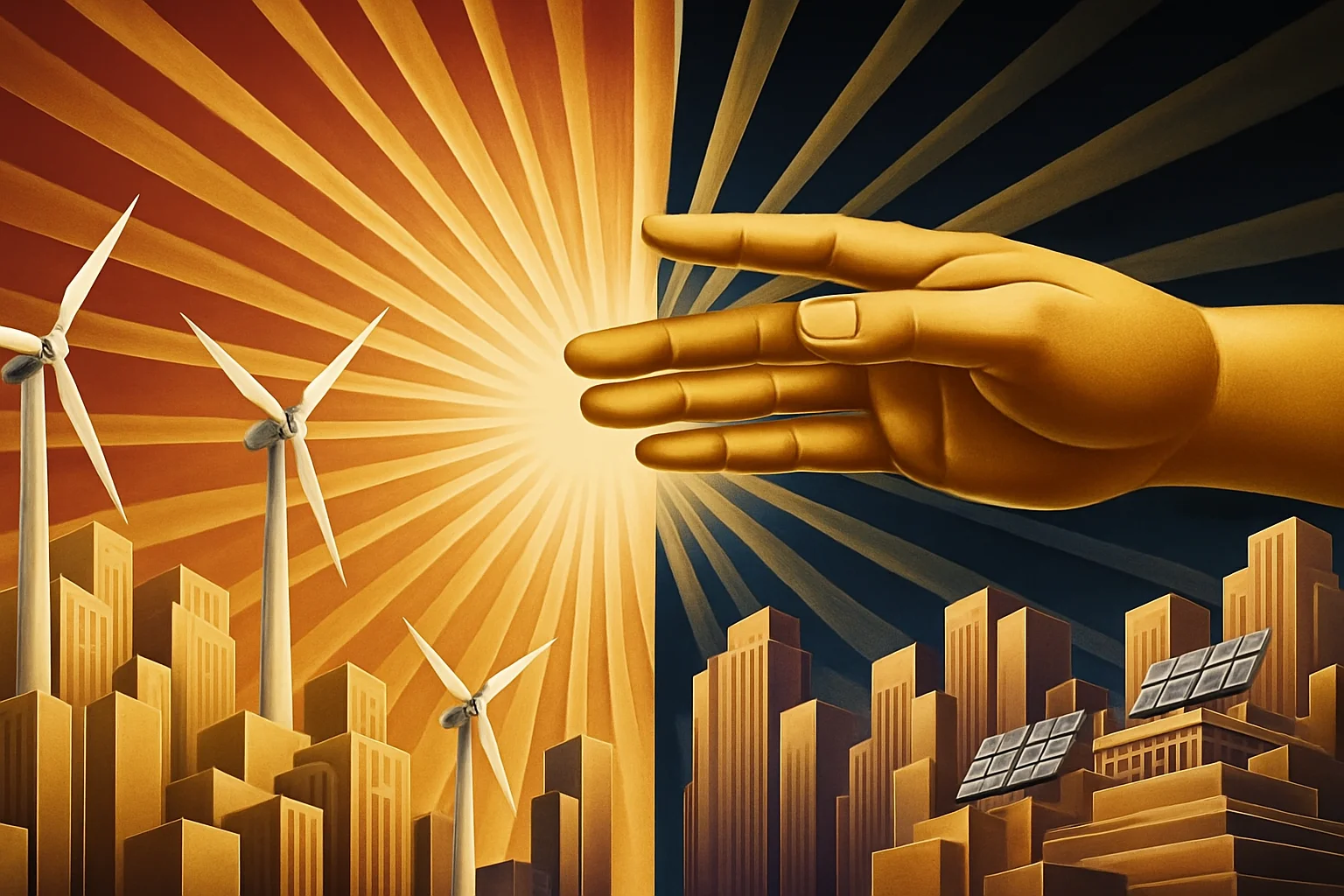
The fragility of this transition becomes evident during “Dunkelflaute”—periods of cold, windless, and cloudy weather when renewable energy production declines. In late 2024 and early 2025, Germany experienced several such events, with wind and solar output plummeting to as low as 0.7 GW out of a 56 GW capacity—just over 1%—on December 27, 2024. During a week-long Dunkelflaute across Central Europe, which intensified over two days, wind energy provided almost nothing, and solar energy contributed zero. Electricity demand surged, but renewables could not keep up. Despite its scale, Germany’s renewable infrastructure fails to meet demand when nature does not cooperate.
The opposite problem, a recent term coined “Hellbrise” (bright breeze), occurs during summer when the sun shines, flooding the grid with excess energy. In Germany, rooftop power plants produce 40 GW of solar energy on sunny days, and they cannot be turned off. The grid cannot absorb this energy, resulting in overproduction and instability. Germany must pay other countries to take the excess energy, or regular power plants must be shut down. This process can take hours, as turbines continue to rotate for another 30 minutes after the power plant is turned off.
Record Imports, Soaring Costs
With nuclear power eliminated, Germany turned to imports and fossil fuels to fill the gap. In 2024, the nation imported record amounts of nuclear-generated electricity from France, where plants achieved their highest output since 2019. Meanwhile, domestic coal and gas usage surged, covering 93.8% of demand during periods of low renewable energy. This reliance came at a steep price: electricity costs at the power exchange spiked to over €1156 per megawatt-hour—ten times the usual rate—forcing companies to temporarily halt production. Since 2000, electricity prices have risen by over 50%, reaching 35 euro cents per kWh by 2022, which has driven per-person consumption down since 2017. Households and industries now bear the burden of paying for two parallel systems—renewables and conventional backups—along with an expensive grid expansion, a cost structure that critics deem unsustainable.
The system is on the brink of collapse. During a near-blackout event in 2024, imports and conventional plants nearly met the entire demand, while renewables contributed very little. Experts warned that a complete blackout in winter could destabilize the grid and shift public opinion, potentially affecting federal election outcomes. The loss of nuclear power increased this risk, as its steady output had previously helped alleviate such crises. The industry felt the strain most acutely: creeping deindustrialization, a key result of green policies aimed at CO₂ neutrality, accelerated as companies faced unbearable energy costs and production stoppages. Critics argue that this situation was self-inflicted—Germany chose this path, not external forces like Russia or the U.S., and is now paying the price.
Grid on the Brink: How Renewable Energy Undermines Grid Stability
New regulations, such as the Solarspitzen-Gesetz (solar peak law), have contributed to the chaos. This law aims to manage solar surpluses on sunny days by mandating smart meters. However, it risks causing brownouts—regional shutdowns—when production exceeds demand. Additionally, it reduces compensation for solar producers without lowering costs for consumers. This shift toward state control and increased regulatory complexity, combined with failed smart meter rollouts and cybersecurity concerns, frustrates both providers and users. Meanwhile, the renewable energy fleet is aging: many wind turbines that have been operational for 20 years are nearing obsolescence, and their replacement could cost trillions. Germany’s dependency on China for new components deepens, exposing supply chain vulnerabilities and undermining energy sovereignty.
Germany’s energy transition is struggling. Plans to increase wind capacity to 115 GW and solar capacity to 215 GW face skepticism, as they do not provide more energy when needed and further destabilize the grid. Storage remains a distant goal; buffering a week-long Dunkelflaute would require 10 TWh of capacity—equivalent to 200 nuclear plants—yet only 0.1% currently exists. The slow pace of fossil fuel reduction, projected to reach zero by 2473, undermines the alleged urgency of climate goals. Industrial decline, soaring costs, and energy insecurity now define Germany’s trajectory. Some advocate for a return to nuclear power, but political inertia and green dogma prevail. Germany’s self-imposed wound—shutting down nuclear power—may lead to its downfall, serving as a cautionary tale of ideology overshadowing practicality.
The fragility of the European power grid became evident in April 2025. Spain, Portugal, and southern France experienced a nationwide blackout due to a massive overload. Solar power production peaked at over 20 GW, rapidly injecting excess energy into the grid. Conventional power plants struggled as turbines accelerated instead of slowing down when energy demand dropped. The grid frequency rose above 50 Hz, creating an imbalance that triggered protective measures. Automatic systems disconnected power plants and isolated sections of the grid to prevent damage. This incident highlighted the grid’s reliance on renewable energy, which, lacking sufficient mechanical inertia, makes it more vulnerable to sudden energy shocks.
A few days before the blackout, Repsol issued a mandatory stock market notice to inform investors about the risks associated with heavy reliance on solar energy. Spanish political leaders ignored warnings about energy issues, prioritizing ideology over practical concerns. Teresa Ribera, a key figure, shifted her stance from supporting nuclear energy to advocating for a clean transformation in the EU. She also contributed to the flooding in Valencia by preventing necessary maintenance for ecological reasons. One thing became painfully clear: photovoltaic systems and wind turbines cannot sustain the power grid alone, due to insufficient rotating mass. The blackout in Iberia could be a Chernobyl moment for renewable energy. This time, Europe was fortunate because enough black start-capable power plants were available. As a result, power could be restored after 12 hours. Next time, we may not be so lucky.
Societal Breakdown
Knife Attacks and Rising Violence
Since Angela Merkel’s decision to permit an unlimited influx of immigrants in 2015, Germany has seen a significant increase in crime rates. In 2023, there were 21,000 reported knife attacks—nearly 60 per day. The online project Messerinzidenz collects publicly available knife crime data and displays these attacks on a map daily. Nancy Faeser, the former Federal Minister of the Interior and Community, presented the Federal Crime Statistics (PKS), which reveal alarming figures and underscore the serious situation.

Similar alarming trends are evident in crimes against sexual self-determination, which have surged from 30,000 to 80,000 per year since 2015. In 2023, group rapes in North Rhine-Westphalia (NRW) showed that 13% of suspects had clearly German names, while 34% had clearly foreign names, despite foreigners making up only 16.1% of the population in NRW. This indicates an overrepresentation of non-Germans in these crimes.
Statistics on migrant violence from 2016 to 2022 reveal stark contrasts for selected crimes. For completed homicides, the numbers are 17 for Germans compared to 191 for immigrants; for attempted homicides, 329 versus 930; and for sexual offenses, 733 versus 19,097, according to BKA (Federal Criminal Police Office) reports.2 Afghan nationals are notably overrepresented in serious crimes such as rape and murder, intensifying debates on migration and crime. Furthermore, it is not only a problem among adult criminals; according to the BKA, a girl is raped every three days by a 12- or 13-year-old. There are currently 688 registered sex offenders aged between 6 and 8.
In 2023, 85,552 violent crimes were attributed to non-Germans out of a total of 248,700 offenses, accounting for 34.4%. This equates to approximately 234 daily incidents.
During New Year’s Eve 2024, over 400 people were arrested in Berlin for attacking police officers. The German news magazine Nius obtained a list of the first names of the arrested individuals through a whistleblower within the police. The list revealed that 58.3% of the names sounded non-German (e.g., Abdul, Ahmed), while only 13.5% sounded German (e.g., Benjamin, Emil), suggesting cultural differences in offender profiles.
The significant overrepresentation of non-Germans in crimes indicates cultural differences that cannot be solely explained by socio-economic factors. Other countries, such as Sweden, face similar integration issues and rising crime rates. Sweden is struggling with gang violence, bomb attacks, and child recruitment, reflecting broader migration challenges across Europe.
Terrorism on the Rise: How Islamist Attacks Shook Germany’s Sense of Security
Additionally, Islamic terrorism has become a significant issue in Germany, with multiple attacks capturing international attention. In 2016, a truck was driven into a crowd at a Christmas market in Berlin, killing 12 and injuring 55. ISIS claimed responsibility for this attack. In 2024, another Christmas market was targeted by a car, resulting in 6 deaths and 299 injuries, motivated by Islamist beliefs. That same summer, a 25-year-old Afghan national named Sulaiman Ataee stabbed several people, including a police officer who was critically injured in the neck and died the same day from his injuries. On January 22, 2025, another knife attack occurred in Aschaffenburg, Bavaria, targeting a kindergarten group in a park. A 28-year-old Afghan man was arrested at the scene. The attacker killed a 2-year-old Moroccan boy and a 41-year-old man, with several others injured, including another child.
Since the last WEF ranking in 2015, Germany has fallen 31 places in terms of security, now ranking 51st, behind Romania, Kuwait, Albania, Poland, and Tajikistan. The Australian Foreign Ministry rates Germany’s danger level as equivalent to that of Turkey and South Africa, reflecting international concerns. Chinese advisories warn travelers about specific ethnic groups.
How does the government respond to these issues? By closing borders, deporting criminals, or addressing the root causes of immigration? Of course not. Instead, they have enacted laws that restrict law-abiding citizens, such as limiting the carrying of pocket knives and creating large “knife-free zones” in public spaces, trains, and buses, criminalizing regular citizens. The Berlin police department faced ridicule for proposing to revoke drivers’ licenses after six knife attacks within 24 months.
When the government fails to protect its citizens, the “social contract” is broken, which can lead to vigilantism. The rise of gated communities indicates a societal shift toward private safety solutions in response to perceived state failure. In Cologne, investor Christian Ley is constructing a guarded complex with fences, gates, and surveillance, catering to affluent residents seeking safety amid rising violence. Cologne, the largest city in North Rhine-Westphalia and the fourth most populous city in Germany, has nearly 1.1 million inhabitants, with 24.3% of the population having a migration background.
The significant increase in migration has not only raised crime rates and terror attacks but also had substantial economic and social impacts. Germany has absorbed a considerable portion of EU migration, with 6 million out of 14 million migrants arriving between 2013 and 2022, due to its open borders and generous welfare system. The country has struggled to accommodate such a large influx of people in a short time. Every aspect of daily life has worsened, from waiting times for administrative procedures to securing doctor appointments. Where I could get a dental checkup appointment a month in advance a few years ago, it now takes nearly six months.
While socialist parties present immigration as the future and backbone of our economy, the reality is quite different. A significant number of young migrants lack the education needed to fill available jobs. Among 20-34-year-olds in 2023, 82.3% of Iraqis, 81.5% of Syrians, 78.3% of Afghans, and 49% of Turks lack vocational training, which predicts higher unemployment and welfare dependency. Additionally, 29.9% of Germans also lack qualifications, compounding the issue.
A House Divided
Europe is more divided than ever. Even though some bureaucrats dream of a United States of Europe, this will never happen. The cultures, languages, and people are too different. Besides, the EU doesn’t want to create a federal system like the United States has with a constitution and 1st and 2nd amendment rights, but rather a centralized system that is more similar to the Soviet Union. Critics mock the EU as EUdSSR.
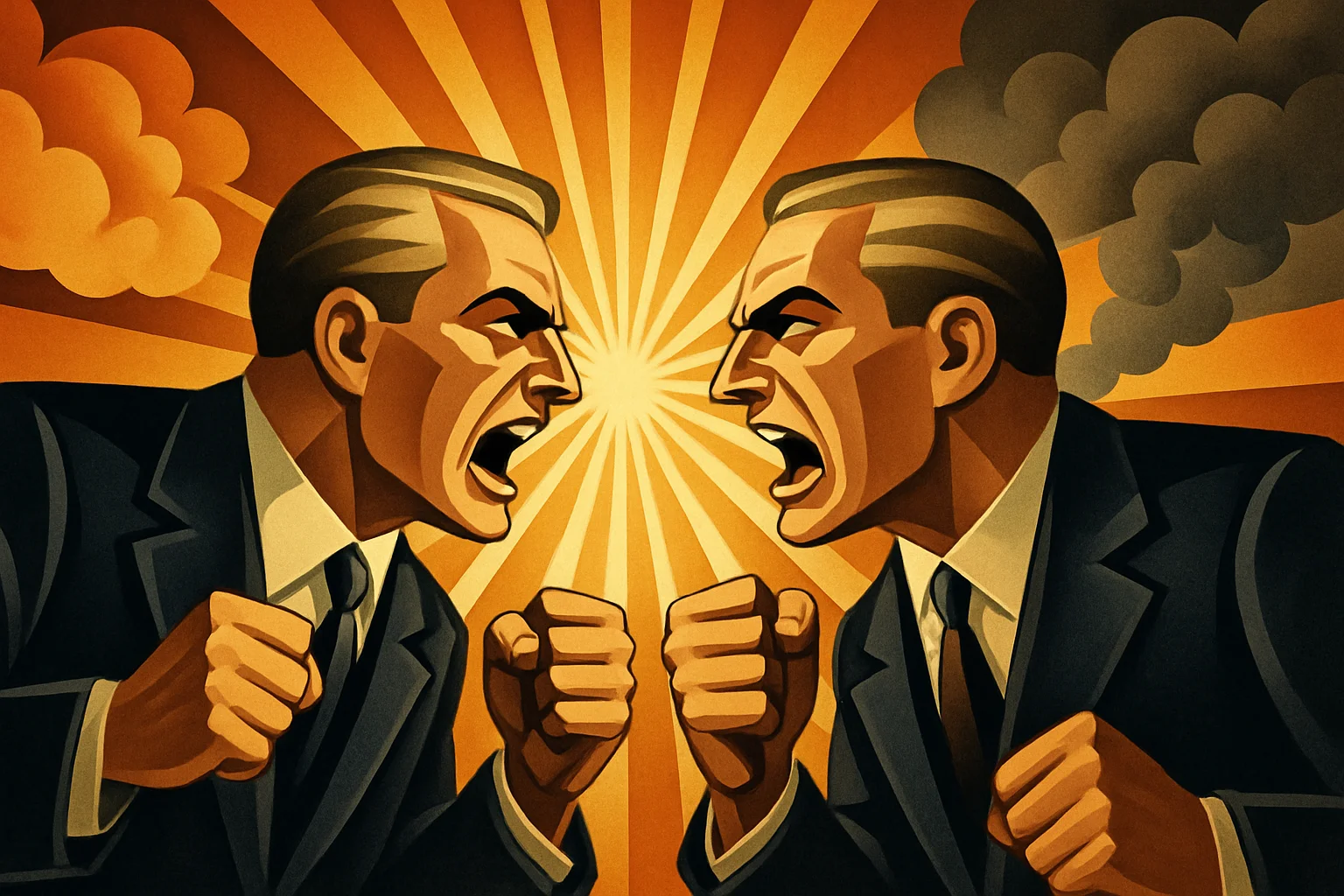
The concept of a European state is more complex than just domestic trade and free travel; the countries involved are too diverse. Ideologically, we have progressive nations like France and Germany, alongside conservative ones such as Poland and Hungary, which hold vastly different views on migration, LGBTQ+ rights, and the rule of law. Financially, the countries are also divided. Wealthier nations like Germany and the Netherlands are net contributors, while poorer countries like Italy, Greece, and Spain face higher debt and unemployment, seeking more financial support from the EU.
The EU comprises core countries and newer members, with 20 nations using the Euro while others maintain their currencies, resulting in varying economic policies and levels of integration. Some EU states serve as direct entry points for migrants and asylum seekers, while others cannot be accessed legally by land. Additionally, some countries are pro-US and critical of Russia, while others prefer greater autonomy and dialogue. Western and Northern nations advocate aggressively for climate action, whereas Eastern countries are slower to phase out coal and transition to green energy. We also see countries that prioritize joint defense, like France, contrasted with those that emphasize national sovereignty, such as Hungary and Poland.
The European Union, under the leadership of Ursula von der Leyen, actively promotes the progressive ideas of specific countries, such as the Green Deal, an open border policy, and a confrontational stance against Russia. Countries that do not comply face fines and penalties. Potential candidates from right-wing parties are targeted. Marine Le Pen from France was excluded from the elections, Călin Georgescu’s election victory in Romania was annulled, and the AfD (Alternative for Germany) was labeled as “securely right-wing extremist.”
The Euro devalues each year, and inflation is rampant. The EU has lost credibility, and the European Central Bank (ECB) is losing its independence. The ECB’s policies are increasingly influenced by political interests rather than economic stability, leading to a decline in confidence in the Euro. The ECB’s balance sheet has expanded significantly, raising concerns about inflation and the long-term sustainability of its policies. The Euro may face failure in the near future. The rushed introduction of Central Bank Digital Currency (CBDC) signals desperation, as the ECB attempts to regain control over monetary policy and combat inflation to prolong its Keynesian money policies. This move raises concerns about privacy and government surveillance, as digital currencies can be easily tracked and monitored. The introduction of CBDC does not address the problems facing the Eurozone; rather, it highlights deeper economic issues.
Two Countries in One
The situation in Germany remains challenging. Thirty-six years after reunification, the country is more divided between East and West than it was when the Berlin Wall fell. The AfD (Alternative for Germany) has gained significant support in the East and is also growing in the West, making it the strongest party. This division is not only political; it reflects deeper cultural and ideological gaps that have persisted since reunification. However, the ideological divide between the AfD and other parties hinders the formation of a center-right coalition. The CDU (Christian Democratic Union) has broken all its pre-election promises and increased the debt by €1.5 trillion for rearmament, infrastructure, and ecological projects. They formed a coalition with the SPD (Social Democratic Party), the former leading party whose government collapsed prematurely, and continued the policies of the previous failed administration.
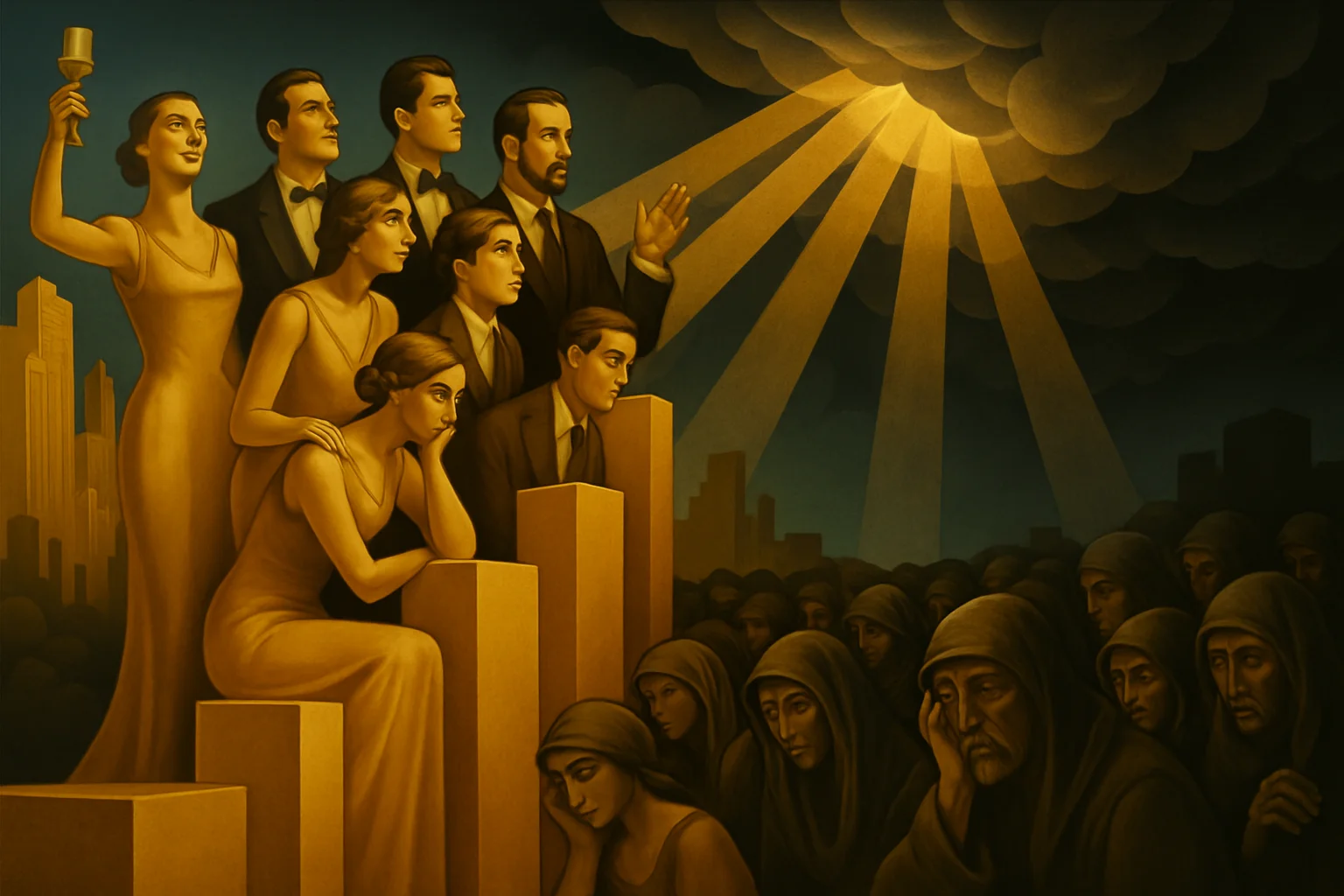
Friedrich Merz, the new chancellor and a former Black Rock employee, understands that his party may cease to exist in the near future if it fails to deliver on its promises. He will face significant challenges in keeping these promises, as the socialist coalition partner will do everything possible to obstruct him. His election as chancellor was already embarrassing, as he became the first chancellor in the history of the republic to fail to secure a majority in the first round of voting. He needed additional support from the former SED—the Wall Murderer Party—to finally be elected chancellor in the second round.
When examining economic maps of Germany, the East remains significantly poorer than the West. The average income in the East is about 20% lower than in the West. In many cities, such as Hamburg, salaries exceed the national average by 10%. The annual household income in the West ranges from €20,000 to €25,000, while in the East, it falls between €17,500 and €20,000. Mecklenburg-Western Pomerania has the lowest household income in Germany, with figures between €15,000 and €17,500. This region also has the highest percentage of voters for the AfD, as seen in the city of Groß Luckow, where 74.7% of the votes went to the AfD. In contrast, the lowest support was in the district of Sternenschanze in Hamburg, with only 2.8% of the votes in the last elections.
The east of Germany is worse off in every regard. Unemployment in the west is in the low single digits, while in the east it reaches up to 16%. Workers in the east put in 69 more hours annually (1,350 hours per year compared to 1,281 hours in the west) but earn less. Life satisfaction is significantly lower in the east, and even car ownership lags behind. The effects of 41 years of socialism are still evident today, despite over €1,000 billion having been invested in the east since the fall of the wall.
It is no surprise that the pain of Germany’s decline is felt most acutely in the east. The AfD has capitalized on this discontent, gaining support from those who feel abandoned by the political elite. Additionally, the former SED (Sozialistische Einheitspartei Deutschlands), now known as “Die Linke” (The Left), remains strong in the East. This strength can be attributed to two different mindsets: “Ostalgie” (nostalgia for the East) and the lingering memory of a totalitarian dictatorship. While some long for the days when the nanny state cared for everyone, others remember the state’s repression, including the imprisonment of dissidents and the killing of over 1,000 people attempting to flee the socialist GDR. East Germans serve as the canary in the coal mine, as they are the first to recognize similarities to the former GDR amid rising authoritarianism in Germany, eroding civil rights, declining free speech, and the economic consequences of central planning.
While the western part of Germany predominantly voted for the CDU, cities leaned towards the Green Party or socialist parties. In contrast, the East was divided between left-wing and right-wing socialist parties. The AfD is not a unified party; it encompasses three distinct factions. The left wing, led by party leader Alice Weidel, is partly market libertarian and advocates for a Swiss model of participation. The right wing, led by Björn Höcke, is a nationalist faction that promotes a new form of nationalism with some socialism. Additionally, many conservatives who were previously in the CDU have joined the AfD. The party is not a monolith but rather a collection of diverse ideas and ideologies. However, they are united in one key aspect: the rejection of the current government and its policies.
The significant estrangement of many Germans from their culture has led to a notable resurgence of nationalism. On TikTok, many young people strongly identify as German. A new type of woman has emerged, the “Ostmulle,” who take pride in their heritage and openly express their love for their country. They are often attractive young blonde women or heavily tattooed and pierced individuals. The rise of the AfD is inevitable, as it resonates strongly with young people in both the East and West, who feel the effects of economic decline and unregulated immigration most acutely. Meanwhile, the boomer generation, which will pass away in the next few decades, tends to vote very left-wing and green, supporting groups like “Omas gegen Rechts” (Grannies against the right). In contrast, the younger generation is divided: half are aggressively woke and green activists, gluing themselves to the streets and vandalizing art with paint, while the other half is becoming more conservative, religious, and nationalistic.
But not only is the country divided politically, it is divided on nearly any topic. While the divide is not clear by group in every topic, they seem to align with Thomas Sowell’s view of the world, with the left representing the “unconstrained” (utopian) vision and the right representing the “constrained” (tragic) vision.
Followers of the utopian vision view human nature as malleable, believing that people can develop morally and intellectually to achieve higher ideals, sometimes even perfection. They focus on intentions and aspirations for social improvement, emphasizing what should be rather than what is. They see social problems as solvable with the right knowledge, will, or commitment, leading to deliberate, categorical interventions and solutions. They value flexibility, direct action, and collective decisions aimed at achieving morally preferable outcomes, even if it means overriding existing processes or constraints.
In contrast, followers of the tragic vision see human beings as inherently flawed and limited, both morally and intellectually. They believe that social evils and conflicts arise from these inherent limitations, not merely from poor institutions or a lack of effort. They argue that society must acknowledge these permanent limits. Progress involves finding workable trade-offs rather than pursuing perfection; attempts to achieve ideal outcomes can be futile and counterproductive. They emphasize evolved traditions, systemic processes (such as markets and families), and the importance of incentives, rather than relying solely on rational planning or moral intentions. Justice and freedom are viewed in terms of fair processes and the absence of arbitrary power, rather than guaranteed outcomes. They advocate for incremental social change, as categorical or sweeping changes often overlook complexities and lead to unintended consequences.

The country is divided on many issues, making it difficult to keep track: climate change, energy policies, immigration, gender ideology and LGBTQ+ matters, COVID-19 vaccines and lockdowns, Donald Trump, Elon Musk, free speech, religion, the Ukraine war, the Israel-Palestine conflict, meat consumption, language, education, and even the concept of “freedom” itself. While the left was the peaceful faction in the 1970s, it has now become authoritarian and collectivist. They demand censorship against “hate speech” and “misinformation,” call for rearmament, and even advocate for open war with Russia, all while promoting a new form of moralizing authoritarianism. The terms “Nazi,” “Fascist,” and “Hitler” are used so frequently that they have lost their meaning. They support globalist agendas like the Sustainable Development Goals, Agenda 2030, and plans for a one-world government and 15-minute cities, pushed forward by organizations such as NATO, the UN, WHO, and the WEF. While many people might still have diverse opinions on topics, it has become nearly impossible to voice opinions without risking the loss of friendships, jobs, or even being reported to the reporting centers. The left has become the new authoritarian faction, and the right has become the new peaceful faction.
A survey by Datapraxis and YouGov, conducted across all European countries, reveals shocking results. As of 2021, only about 11% of Germans “feel free” to speak openly, meaning they believe they can express themselves without fear of repercussions. This figure has dropped from 68% in 2019 to its lowest point ever recorded.
The Gender Divide
The divide extends even between genders. A striking article in the Financial Times from January 2024 examined how the perspectives of women and men aged 18 to 30 have evolved since the 1990s. The article compares several countries in the East and West, presenting diagrams for South Korea, the USA, Germany, and the UK. In Germany and the US, men have become slightly more conservative over time, while women have become more progressive by 20 to 30 points. In the UK, men have become 20 points more progressive, while for women it increased by 50 points. In South Korea, women have become 30 points more progressive, while men have become 20 points more conservative. The gender divide encompasses issues such as sexual harassment, immigration, and racial justice. This ideological split could have long-term societal implications, potentially influencing political landscapes, marriage rates, and social dynamics.

While it may initially seem that men have issues with women becoming more independent, there are other explanations. The modern world has disconnected people, particularly women, from the real dangers of life. A world built and maintained by men—where in some jobs, men comprise 90% or more—creates the illusion of a consequence-free environment. Additionally, women tend to be more empathetic. While it is natural and beneficial for them to direct this empathy toward their offspring, family, and community, many women, particularly childless women, extend this empathy to the entire world, including strangers, animals, and nature. Dr. Gad Saad, a professor of marketing at Concordia University, coined the term “suicidal empathy” to describe this phenomenon. He argues that it results from the modern world’s disconnect from reality. This form of empathy can lead to a misunderstanding of the real dangers and consequences of certain ideologies and policies, ultimately causing societal harm.
This phenomenon is evident on social media and in the news, featuring numerous horrifying stories about independent women traveling in dangerous places like India, Africa, or the Middle East, where they become victims of harassment, rape, and even beheading. It also appears in the support for risky policies such as open borders, which allow entry to individuals who are anti-Semitic, anti-gay, and suppress women in their cultures. The result of this world view is bizarre groups like “Queers for Palestine,” whose members would be thrown off roofs or hanged from cranes just 30 minutes after arriving in Palestine.
Cem Özdemir, the former minister of agriculture and member of the Green Party, was confronted with his party’s open border policies in 2024, when his daughter, already a victim of occasional racism, was sexualized by migrants.
Recently, there was a trend where women were asked whether they would prefer to meet a man or a bear alone in the forest. Most women chose the bear, highlighting how disconnected they have become from real danger.
The widespread support for the LGBTQ+ movement, especially the Trans and Queer movements, is shortsighted. At its least harmful, it threatens women’s sports and reduces opportunities for biological women. In more toxic forms, it allows predators access to protected spaces such as women’s shelters, bathrooms, and changing rooms, as well as access to children in kindergartens and schools. The severe misuse becomes apparent weeks or months after a country introduces these new “privileges.” Criminal men switch their gender and rape women in women’s prisons, while trans individuals start suing companies or individuals for dead naming or to gain access to certain spaces. In its most harmful form, this movement causes permanent and irreversible damage to young children. As Jordan Peterson states, it is a butchery that is as bad, if not worse, than eugenics or lobotomies.
Conclusion
In conclusion, Germany’s and Europe’s decline reflects a deeper crisis beyond economics—one rooted in cultural division, overregulation, and the erosion of individual responsibility and merit. As bureaucracy expands and ideological policies override practical concerns, trust in institutions and social cohesion falter. The result is a society marked by stagnation, rising conflict, and a loss of hope for the future.
Without a renewed commitment to personal freedom, open debate, and pragmatic solutions, these trends will only worsen. The warnings of Atlas Shrugged resonate today: when achievement is penalized and mediocrity rewarded, decline becomes inevitable. Only by facing uncomfortable realities and valuing competence and liberty can Europe hope to change course.
Footnotes
-
Prof. Dr. Becker, Florian (2025): Psychologe erklärt, warum junge Menschen „zu blöd zum Autofahren“ sind ↩
-
Bundeskriminalamt (2025): Polizeiliche Kriminalstatistik, Nichtdeutsche Tatverdächtige nach Alter und Geschlecht ↩